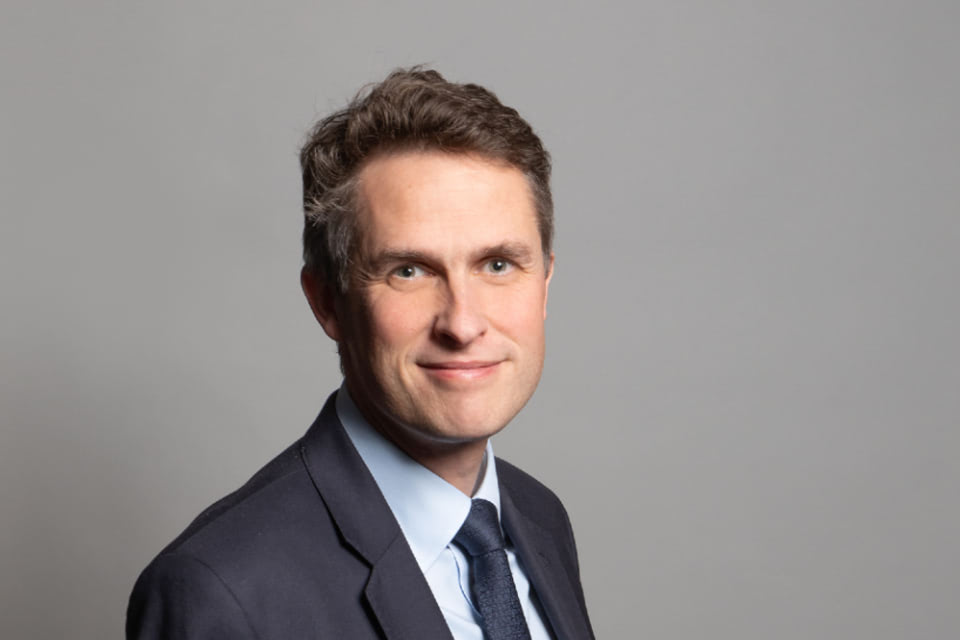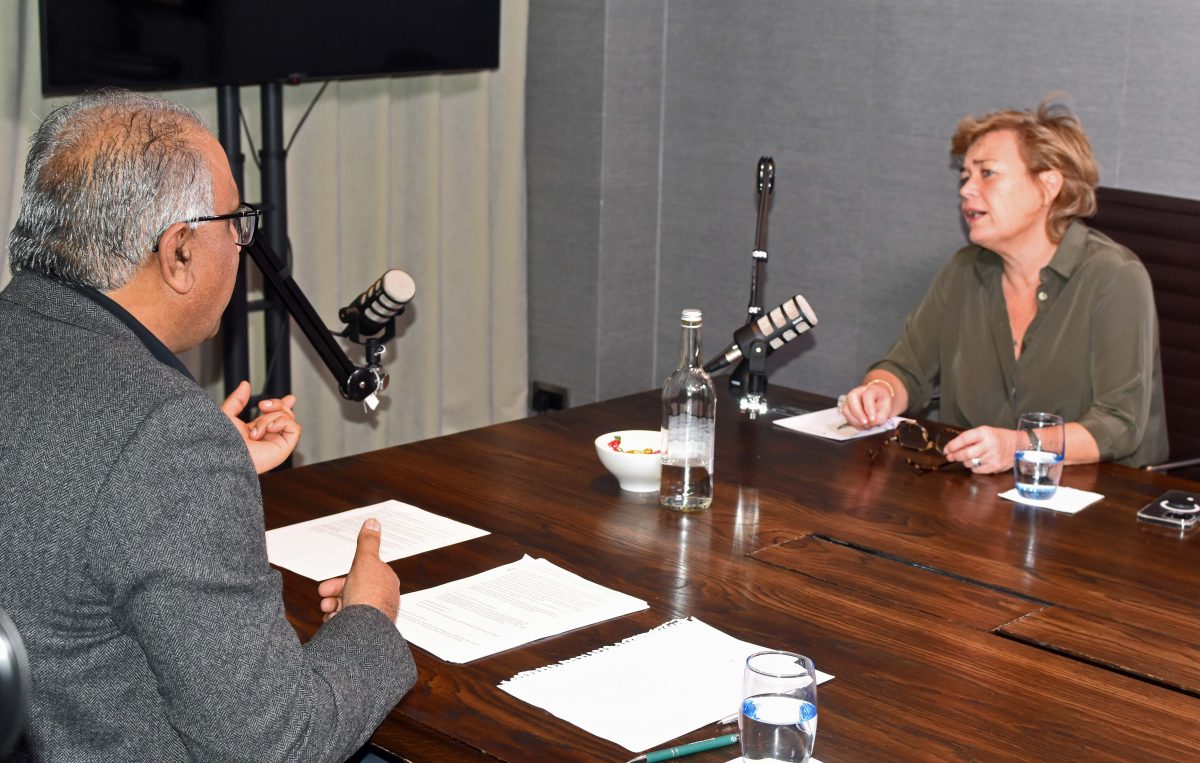Education Secretary’s statement on the Government’s £1 billion Covid catch-up plan to tackle impact of lost teaching time

Education Secretary @GavinWilliamson on the Government’s £1 billion Covid catch-up plan to tackle impact of lost teaching time
https://www.youtube.com/watch?v=SF21GEfAg8c
This transcript is for the coronavirus statement delivered on 19 June2020:
Welcome to today’s briefing from Downing Street. I’ll start with an update on the progress we’re making to beat the virus, before moving on to an update on schools.
The first slide shows the latest COVID alert level:
- The COVID-19 alert level across the UK has moved down from level 4 to level 3, as recommended by the Joint Biosecurity Centre.
- The Chief Medical Officers for England, Scotland, Wales and Northern Ireland have reviewed the evidence and agree with this recommendation.
- In all four nations, there has been a continuing steady decrease in cases but this does not mean that the pandemic is over. The virus is still in general circulation, and localised outbreaks are likely to occur.
The second slide shows cases confirmed with a test:
- 7,433,114 tests for coronavirus have now been carried out or posted out in the UK. This includes 169,600 tests carried out or posted out yesterday.
- 301,815 people have tested positive, an increase of 1,346 cases since yesterday.
- SAGE has confirmed today that their estimate of the R rate for the UK is unchanged on last week, at 0.7-0.9. We want to keep the R number below 1.0. R is the average number of additional people infected by each infected person.
The third slide shows the latest data from hospitals:
- 494 people were admitted to hospital with coronavirus in England, Wales and Northern Ireland on 16 June, down from 534 a week earlier, and down from a peak of 3,432 on 1 April.
- 354 coronavirus patients are currently in mechanical ventilation beds in the UK, down from 392 a week ago, and down from a peak of 3,301 on 12 April.
The fourth slide shows what is happening in hospitals across the country:
- There are now 5,030 people in hospital with coronavirus in the UK, down 10% from 5,608 a week ago and down from a peak of 20,699 on 12 April.
- As the graphs show, while there is some variation, most nations and regions of the UK are broadly following a similar pattern.
The fifth slide shows the daily figures for those who have sadly lost their lives after testing positive for coronavirus:
- Across all settings, the total number of deaths now stands at 42,461. That’s an increase of 173 fatalities since yesterday.
- When measured by a 7-day rolling average, the daily number of deaths currently stands at 140, down from a peak of 943 on 14 April.
Turning to schools.
In March when we asked schools to close we did something different from virtually every other nation, we made the decision to keep schools and nurseries open not just for the children of critical workers but also to those children who are the most vulnerable in society. This was because we recognised the important role that they play in keeping those children safe.
From the start of this month, schools began to welcome back children from nursery, reception, Year 1 and Year 6 as part of a phased and cautious return. And from this week, we started to see the return of years 10 and 12.
We want as many children back in school as possible which is why, this week, we announced more flexibility for primary schools so that they have the opportunity to bring back more of their pupils if they are able to do so, in line with the protective measures that we have set out.
Today, with the overwhelming majority of primary and secondary schools, as well as colleges and nurseries, opening to more children and young people, I wanted to take the opportunity, again, to say thank you. Thank you to all of the teachers, childcare and support staff who have done and continue to do so much to welcome children back in to such a positive, supportive environment.
I think all of us who have seen our children return to school, know they are enjoying being back in the classroom and being with their friends and other children.
School is vital for every one of our children. That is why we will bring all children, in all year groups, back to school in September.
While many children have already returned to school, I do understand the anxiety that some parents continue to feel. I want to assure you the wellbeing of your child is absolute top priority of us all.
We have put robust protective measures in place, including a hierarchy of controls and protective bubbles – I must stress that it is in every child’s best interest to return to school if they are eligible and able.
This measured return is part of our roadmap, it’s part of how we will recover and rebuild.
But I think all of us recognise how much children have missed out, and why it is so important we support them to catch up on lost ground.
Having opened schools to more pupils and set out our intention for a full return in September, the next part of our recovery will be to roll out our hugely ambitious catch-up plan for all our children. We must get them back to where they should be and put in place a secure foundation for longer term reform. We will not allow an entire generation to lose out on their education or accept lower expectations for them.
That’s why we are launching the £1 billion Covid catch-up plan that will lift outcomes for all pupils, with targeted support for those from disadvantaged backgrounds who are most at risk of falling behind because of this disruption.
As part of this package, we’ll provide a universal ‘catch up premium’ worth £650 million for all state school children in England to help them to make up for the lost teaching time in the next academic year.
The Education Endowment Foundation has published a guide for schools on how the money could be best spent, which will include intervention programmes, access to technology or summer schools.
This crisis will have affected children in many different ways – and for this reason I am giving schools the discretion to tailor this funding towards their particular needs and the needs of the children they teach.
The plan also includes a new £350 million National Tutoring Programme to increase access to high-quality tuition for disadvantaged children and young people. This will not only help children in the short term but will create a positive, long-lasting legacy to drive up standards – expanding the number of high-quality tutoring providers for all schools to use.
This £1 billion package is on top of the £14.4 billion three-year funding settlement announced last year – recognising the additional work schools will need to do to help students to catch up.
Over the coming weeks we will publish further information and guidance to help schools prepare for a full return in September. We are working across Government and with the sector to ensure these plans are fully in place so that this can happen.
The pandemic has dealt an unprecedented shock to our education system, as it has to many other parts of our national life. Although we have a clear plan, there will of course be times when we have to respond quickly to changing circumstances. If this virus has taught us one thing, it is the absolute importance of being flexible and adaptable when we have to be.
The education system has shown it can do this and more.
We all want to see every child back in school and we will work together to achieve this.
Gavin Williamson, Education Secretary











Responses